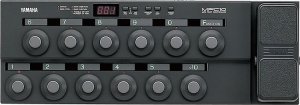
Yesterday I found a really cheap sound card at the used music shop here in Nagano-city, Japan. The sound card is an E-MU 0404 PCI Sound Card and it came with an E-MU Emulator X2 Sampler Software Disk. Everything installed flawlessy into my Windows 7 PC and I must say it’s a fantastic combo to work with. How I primarily use it right now is to create multi-samples for my Roland Fantom X7 Keyboard and then transfer those sounds to the Roland S-50 12bit sampler. I basically audition samples using the X2 software. When I find what I like I then fire up Extreme Sample Converter and record a multi-sample automatically using the VST/Hardware recording function. I set my key splits, velocity layers, release, etc. and Extreme Sample Converter does the rest.
I then take that mult-sample program and convert it instantly into Akai S5000 format which I then import into Nexoe’s YASE for the Fantom X and G series keyboards. After importing the Akai S5000 sample into the Fantom X7 I have a perfect multi-sample of what I played in the Emulator X2 software. From there I can load up the same multi-sample and play it on my Fantom XR rack which is then connected to my Roland S-50. The S-50 samples in the multi-sample kit and I can then get that 12bit lo-fi sound beautifully and almost instantly. It’s incredibly easy and fast. The possibilities are unlimited with sampling sounds into the Fantom X series keyboards as I find their import ability to be very simple, especially when using Nexoe YASE.

The Emulator X2 software and E-MU 0404 PCI sound card make it incredibly easy to audition and tweak sounds. Plus you can import your own sounds and create some sophisticated multi-sample programs which can then be converted using Extreme Sample Converter. I usually use ESC to record VST sample libraries to the Roland Fantom X and on over to the Roland S-series samplers. It’s just easier that way than doing all these S-Series sample conversions. In Japan, E-MU sound cards can be expensive and difficult to find. I lucked out in finding the 0404 PCI and it really works and sounds fantastic. Check them out if you can!
UPDATE #1: I just bought and downloaded these E-MU Emulator X2 video tutorials at http://www.emulatorxone.com/emulator_x_video_tutorial/emulator_x_video_tutorial.htm . They are really helpful and have helped me to understand the inner workings and programming of the Emulator X2 much faster. I highly recommend these video tutorials if the Emulator X is new to you. So far I’ve really enjoyed the Emulator X2 for creating multisamples for my hardware keyboards. It’s really great for that.




